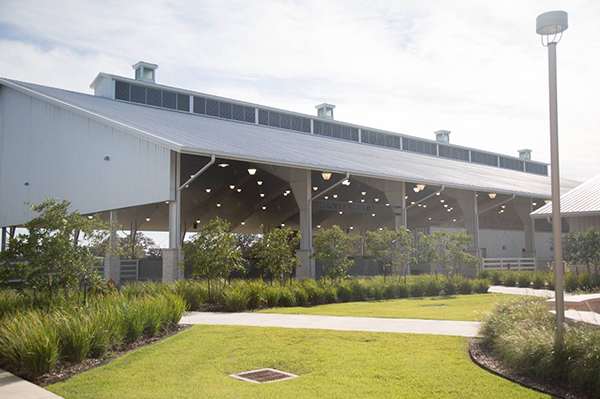NCEA Equestrian Camps Gain Momentum
NCEA News by: Alex Riley
WACO, TX — Carol Gwin was a little concerned. The SMU equestrian coach was worried her first summer camp might not fill up. After two days, there were no vacancies.
“And all we did is advertise on social media. There seems to be a real interest for the recruits to want to come to these camps,” Gwin said.
Equestrian summer camps run by NCEA teams have grown in recent years, with programs developing their own philosophy on how they operate. The one thing that is constant between them – it’s an opportunity for young riders to learn about the next level of competition.
About five years ago, Oklahoma State coach Larry Sanchez restructured his camps to focus on what it takes to compete at the NCEA level. He goes over eligibility requirements, compliance and recruiting rules with parents and athletes so they have a full understanding of the process.
Once camp starts, it’s a week of riding unfamiliar horses on a training schedule similar to what his team faces during the school year. At the end of the week, campers take part in a mock meet that is scored under NCEA rules.
“By the time they leave the camp, they are very well-versed on what it takes to be recruited and how to position themselves to be recruited, and then once they get on a team what to expect,” Sanchez said.
At Sweet Briar College, coach Mimi Wroten keeps her camps small (10 athletes or less) to maximize training. The Vixens, a Division III school, took part in the NCEA Championship for the first time earlier this year, so elements of that format were added to this year’s camp.
With every rider having a different skill set, Wroten tries to give everyone individualized coaching during the process.
“(By keeping the camp smaller) it helps us have a good variety of horses that each student gets to ride and learn from, as well as they get to ride and learn from several different coaches and instructors we have,” Wroten said.
Attending a camp is a good place to set a foundation, but it’s not a guarantee to becoming a collegiate rider. Sanchez estimates he receives up to 400 videos from prospective student-athletes, but on average the team brings in just 12-13 new riders each year.
While recently looking through old camp photos, Wroten found a 2015 group shot of six riders, five of which are now on the Sweet Briar team. She called it “a good year,” but obviously something that doesn’t happen every time.
Gwin stressed the importance of learning about the sport, the coaches and the school during a camp visit. Understanding the level of competition and requirements to compete at the NCEA level is important.
While equestrian is individualized, it’s also important to grasp the team concept. It’s something that needs to be experienced to be understood.
“The best part of NCEA and NCAA riding is they get to participate in this as a team,” Gwin said. “I think that the camp really kind of shows them that because if you’re not on a horse during the camp, you’re watching your other teammates on horses and kind of getting to know those horses and learning a little bit. We really tried to keep the camps interactive so the kids get to know each other.”











